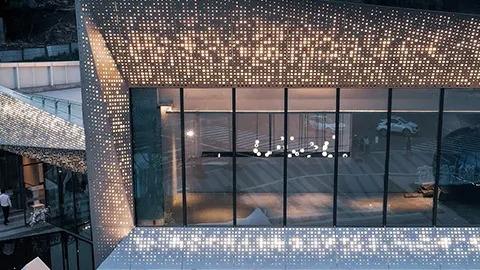Aluminium wall panels are a flexible and strong fabric applied in both indoor and outdoor programs. They're diagnosed for their lightweight however strong houses, making them easy to put in and cope with. The one's panels are available with a ramification of finishes and hues, thinking of several aesthetic options. They are regularly used in business building, residential initiatives, and public areas because of their resistance to weathering, corrosion, and fireplaces.
Aluminium wall panels moreover offer outstanding thermal and acoustic insulation. They will be flat, curved, or perforated, providing flexibility in layout. Moreover, they're environmentally pleasant, recyclable, and contribute to sustainable creation practices. The preservation of aluminium wall panels is minimal, requiring the simplest occasional cleansing to preserve their appearance and common performance.
Aluminium Wall Panels Enhance Thermal efficiency
Aluminium wall panels are an increasing range turning into a famous desire in contemporary creation due to their dazzling thermal performance. This material offers numerous blessings that contribute to the electricity overall performance of buildings, making them extra sustainable and cost-effective. Right here’s an in-intensity observe how aluminum wall panels enhance thermal efficiency:
High Reflectivity & Insulation
One of the number one motives aluminium wall panels are effective in improving thermal efficiency is their high reflectivity. Aluminium can replicate up to 90 % of solar electricity, significantly decreasing warmness absorption. This function allows for maintaining buildings cooler for the duration of warm climate, thereby decreasing the call for air-con.
Further to reflectivity, aluminium wall panels often come with included insulation layers. These layers can be made from substances together with polyurethane foam or mineral wool, which provide exquisite thermal insulation. By way of incorporating those insulation materials, aluminium panels assist in minimizing warmness transfer thru the constructing envelope, ensuring that indoor temperatures stay strong irrespective of external weather conditions.
Lightweight and Sturdy
Aluminium is a lightweight material, which means that it does now not add sizable weight to the shape of a building. This lightweight nature makes it easier to put in and decreases the general load on the construction’s framework. Regardless of its lightness, aluminium is pretty durable and may resist harsh weather conditions without degrading. Its resistance to corrosion and put on ensures that the thermal performance residences of the panels continues to be intact over the years, imparting lengthy-term energy financial savings.
Versatility in Design
Aluminium wall panels are to be had in various designs and finishes, making them appropriate for specific architectural styles. This versatility allows architects to layout building that aren't the handiest energy-inexperienced but are additionally aesthetically beautiful. The panels can be custom-designed to consist of exclusive sorts of insulation, thickness stages, and floor treatments, all of which contribute to the general thermal overall performance of the construction.
As an example, perforated aluminium panels can be used in combination with insulation to create a ventilated façade device. With this tool we could air circulate the panels and the construction’s outdoor wall, providing a similar layer of thermal law. By way of controlling the float of air, ventilated façades can lessen warmth benefits in the summer season and heat loss inside the wintry weather, further enhancing the building’s thermal performance.
Environmental Benefits
The manufacturing and use of aluminium wall panels provide considerable environmental blessings. Aluminium is a recyclable material, and the recycling manner requires the most effective fragment of the electricity needed to produce new aluminium. Through the usage of recycled aluminium panels, developers can lessen the environmental effect of their tasks and contribute to a more sustainable production industry.
Moreover, the improved thermal efficiency provided through aluminium wall panels leads to lower strength intake for heating and cooling. This discount in strength use now not handiest translates to value financial savings for constructing owners but also decreases the overall carbon footprint of the building. In a technology wherein environmental considerations are paramount, the use of aluminium wall panels aligns with the growing emphasis on green construction practices.
Conclusion
Aluminium wall panels provide a combination of high reflectivity, first-rate insulation, sturdiness, and design versatility that substantially complements the thermal performance of a building. Their use contributes to lower strength intake, environmental sustainability, and advanced construction performance. Because the demand for electricity-efficient creation solutions continues to rise, aluminium wall panels are set to play an essential position in the destiny of sustainable building layouts.


